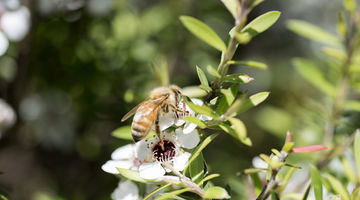Not all Mānuka honeys have the same ability to kill bacteria. Rating the strength of different batches is important so that people can choose the right honey for their needs.
Transcript
Peter Molan (University of Waikato)
The level of activity in each batch of Mānuka honey is measured and recorded as a UMF number, so the Mānuka honey is rated that way.
Kerry Allen (University of Waikato)
To start developing a test to determine the antibacterial activity of honey, I started with a known test called a well-diffusion assay and then adapted that test. The process is to, first of all, make an agar plate with the bacterial culture added.
We melt the agar, then we pour the plate and - once it’s set - we can make some wells in the plate with a cork borer. Then we take the little circles out. Then we can add some honey solutions to the wells and also the phenol standards [to allow for a fair comparison between tests done on different days].
Once that’s done, we put it in an incubator and incubate it overnight at 37 degrees, so that the bacteria will grow around the wells.
If there’s any antibacterial activity from the solutions that I’ve put in the wells there’ll be a clear zone where the bacteria haven’t grown.
Peter Molan (University of Waikato)
The activity diffuses out from the well and - depending on how strong it is - it’ll give a zone around the well where no bacteria can grow.



